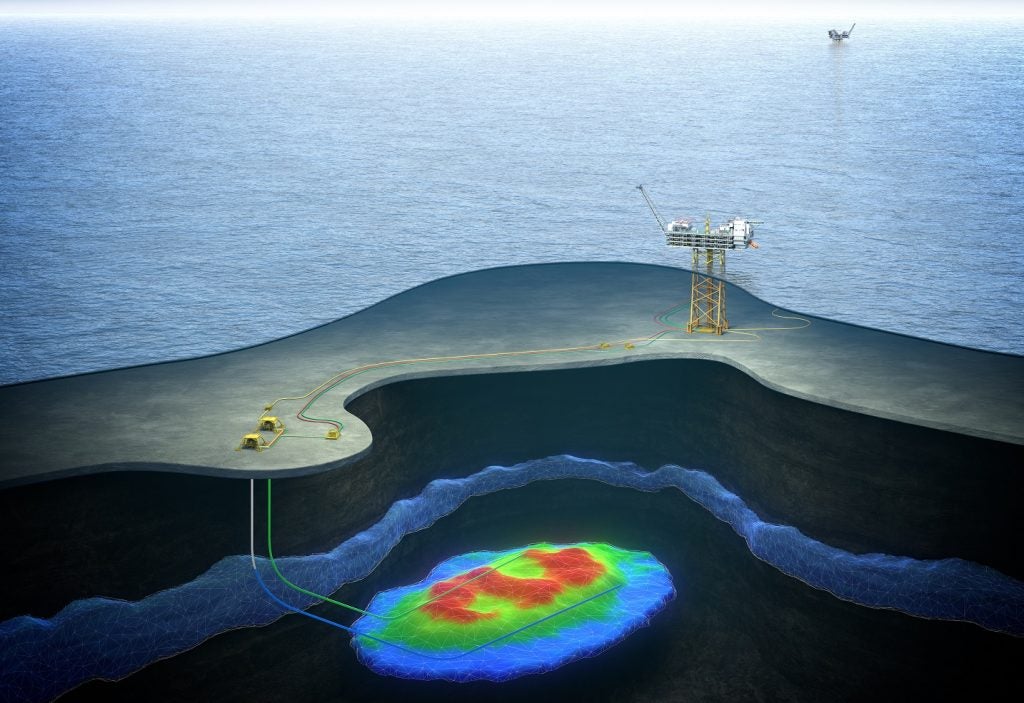
Over the last two years, e-procurement for marine purchasing has gone from a faddish curiosity to a business tool that mainstream operators are willing to invest in. Several oil and gas companies are also using e-procurement for supply and services to their offshore rigs situated in international waters.
The buyer usually aggregates the needs of several offshore oil rigs, either those owned by a single large company or as a collective function for a number of smaller companies. The buying agent sometimes splits the requisition by category of items needed into several requests for quote (RFQs), each targeted at vendors that supply that category.
Vendors may be ship chandlers who manage general kinds of supplies for a given port or specific manufacturers for spare parts and other oil rig components. In case expensive or complex technical services are required, the technical superintendent of the oil exploration company must have the expertise and authority to request, review and approve the purchasing decision.
In this case, the RFQ is communicated to that individual and may either be approved outright, changed accordingly or rejected/sent back to the ship/oil rig for revision. A vendor may decide to respond to an RFQ by generating a quote for goods and services from their offerings, and fully specifying pricing for these items.
The quote is then communicated back to the buying agent. The buying agent reviews all quotes received for a specific RFQ and orders according to the oil rig’s needs. This involves regrouping items from several quotes to receive the best quality, pricing and delivery terms.
See Also:
An order is then sent to the vendor, who reviews and determines if the order can be fulfilled. If not, an order response and a revised quote are prepared and sent to the buying agent for review and reorder. If the order is acceptable, the vendor completes the order. On the receipt of the ordered items, payment is made.
How well do you really know your competitors?
Access the most comprehensive Company Profiles on the market, powered by GlobalData. Save hours of research. Gain competitive edge.

Thank you!
Your download email will arrive shortly
Not ready to buy yet? Download a free sample
We are confident about the unique quality of our Company Profiles. However, we want you to make the most beneficial decision for your business, so we offer a free sample that you can download by submitting the below form
By GlobalDataTHE RISE OF E-SELLING
This whole process for procurement of supplies and services to offshore oil rigs can be automated using the internet, web services and integration between oil rig owners, buyers, oil rig officers, vendors and any other intermediates.
The reliability, scalability, ease of use and administration, and cost-effectiveness of this kind of web-based platform, in terms of supporting process-intensive business operations such as global procurement from a single window, are well documented, and have helped oil rig owners realise tremendous savings through efficient paper-less work management with trading partners.
Many of these innovations are taking place in the marine fuel procurement business, with several companies forming internet portals such as OceanConnect and efuel with a view to changing the basic relationship between buyers and sellers of fuels. This ensures a hitherto unimaginable amount of information on pricing levels and product availability. Since its inception in 2000, OceanConnect.com has also aggressively expanded into other marine products and services. The major players in the industry clearly consider this serious business.
Some fuel and product suppliers have gone a step further with value-added offerings for their customers using the power of the internet. One example is testing and advisory services that are provided post-procurement of fuel/lubricating oil. In the case of fuel oil, the testing service is provided mainly by classification societies such as Lloyds and DNV, to ensure neutrality in analysis.
Marine lubricating oil suppliers use web-based software applications as an advisory service, to give their customers a better understanding of the machinery and their associated fuel/lubricant performance. The process is initiated by the suppliers’ designated labs receiving the used lubricant samples from the vessels subscribing to the suppliers’ advisory service. The sample is then reviewed and analysed by the suppliers’ lab technicians, who then interpret the results and electronically transmit their comments to the suppliers’ central systems.
Innovative use of the web has thus enabled company-specific business operations and processes to be e-enabled, resulting in improved productivity, a rise in collaboration between partners, a strong customer base, improved services to customers, and reduced procurement costs and times.
This ‘e-fever’ has caught on in the tanker trading market as well. Tanker transportation has always been an epicentre of global attention through its links with oil trading. Tankers are vital for the movement in bulk of oil, petroleum products, chemicals and liquefied gas products from their politically sensitive origins to multiple destinations around the globe.
Tankers are a cost-efficient and extremely flexible mode of transport, and have made global transport of oil possible. This key segment of the maritime industry today is the largest component of sea-borne cargo movements – more than a third of all cargoes routed through sea.
Sales activities are now more and more prevalent through the internet in the shipping business area. Today, cargo booking sites, scheduling portals and auction sites have become important e-selling channels for shipping companies and are decreasing the marketing and distribution costs of information-centric services.
For example, e-B/L (Bill of Lading) is now a key component of the entire shipping processes documentation. This contains proof copies, which can be checked prior to issuance of the original Bill of Lading, and minimises re-processing time, reduces paper flow and eliminates faxing. All this cuts costs and processing time between carriers and shippers when changes occur.
The networks between shipping companies and their agents allow both sides to monitor the bookings from online and offline marketing efforts in a single database. Bookings are entered directly onto the systems, posted to centralised databases and collected, allowing shipping companies and their territorial sales forces to operate efficiently. The intra-firm networks and intranets also enhance the total shipping service processes from production to distribution by linking up all related departments and reaching the pool databases.
Information-centric services before and after the sales processes in shipping are delivered directly and indirectly using secure XML messages and documentation. Typically, this involves registration of a shipper/cargo owner/charterer in a shipping line’s web application, issue of digital certificates by shipping line and website personalisation for the shipper by the shipping company. This enables the shipper/cargo owner/charterer to receive information related to shipment in a customised and secure way.
Ship charter is a contract by which a ship is hired or leased for the transportation of cargo by sea. Ship chartering deals with cargo and vessel matching. Success in ship chartering largely depends on the ship owner-shipper relationship and the trust and confidence that exists between the two. This means a greater degree of face-to-face interaction, something the internet cannot provide and exchanges such as Baltic Exchange, NYMEX and Singapore Mercantile Exchange claim as a competitive advantage.
However, with web applications becoming more common and user-friendly, future maritime exchanges need not be in cities where brokers operate.
ONLINE INFORMATION
Charterers have their own complex systems (many automated) of actually assessing the ship from the data available and determining whether or not it is suitable. The charterer’s decision to charter the vessel depends on a variety of different criteria, of which vessel inspection is just one element. Charterers review information from numerous sources, including SIRE (a tanker’s latest inspection report), uploaded onto OCIMF1’s online database.
Because of the internet, the SIRE program database is now available online to all participating companies, accredited inspectors, ship owners and oil terminal operators. SIRE2 participants and government organisations can access all current online reports of required vessels, including the vessel’s detention and casualty record, its past experience with the vessel and its management. This is of tremendous importance to oil trading and scheduling companies, which can use the web to access this data in real time to help them make decisions about logistics and supply.
A number of private portals such as the RightShip & Equasis have also been developed to provide accurate and reliable information on vessels, owners and managers. On the commercial side, a large number of portals have also sprung up to help shippers and shipping companies enter into contract management. This is particularly useful with spot market contracts.
Another e-community built around cargo movements within the petroleum industry is ShipIQ.com, a tanker-chartering portal. The portal has successfully attracted oil traders, charterers and tanker operators by providing quality information, control of the chartering process, control of confidentiality, flexibility in terms of business processes, and efficient documentation generation and handling. ShipIQ also offers news and market reports.
These ‘shared industry’ electronic platforms provide their users with many additional advantages, such as real-time market intelligence, pre- and post-fixture voyage management applications, freight futures trading, and risk management tools. These exchanges have enabled their users to increase their operating efficiencies and reduce costs through a simpler, quicker and more automated transaction process, improved communication flows, reduced paperwork and duplication, collaborative systems, reduced management time, and reduced IT operating costs.
WORKING TOGETHER
Crucial to the availability of this information is that oil companies, traders, brokers, schedulers and carriers interface their internal systems with these portals, agencies and exchanges in real time for direct information access. The critical issue is that, with many such exchanges or their associated applications in the market, how can such disparate technologies talk to each other and relay information?
One noteworthy response has been that of the Maritime Electronic Commerce Association (MECA), which enjoyed some early success with an XML schema for procurement and has recently launched Maritime Chartering Mark-up Language (MCML), a data scheme for organising ship descriptions, voyage files and post fixture information. Standards such as MCML are a great advantage to the tanker industry, which is a fertile breeding ground for the new XML chartering protocol.
The nature of shipping is to operate in an open and highly competitive market, so it is inevitable that the web is playing an increasingly prominent role in shaping more efficient markets. With the global online logistics market slated for significant growth over the coming years, it is time that maritime players grabbed their rightful share of the pie.
The web has become a ubiquitous tool for enhancing all aspects of day-to-day marine business. Maritime players have to embrace the web, incorporating the logical connectivity to move shipping data from application to application at speeds and volumes that result in greater visibility in supply chains.
Ultimately, the success of e-business rests on the ability of buyers, suppliers and IT service providers to work together to develop easy-to-use operational web technology solutions for the benefit of all parties.





